

We may earn revenue from the products available on this page and participate in affiliate programs. Learn More ›
The question of when to prune hydrangeas depends on the types you have. Those that flower in early summer on old wood (shoots produced the previous year) should be trimmed in midsummer immediately after they bloom. Hydrangea types that flower on new wood (shoots produced the same year as their posies) in midsummer can be pruned in late winter or early spring, perhaps in autumn in mild climates.
When considering how to prune hydrangeas, keep in mind that they don’t require trimming to flower. So, if you are in doubt, just cut pruning from your hydrangea care altogether!

Before You Begin
Keep in mind that there are other articles on drying hydrangeas, growing hydrangeas in pots, fertilizing hydrangeas, and changing hydrangea color. This one will concentrate solely on hydrangea pruning. Before you begin, clean your shears with a disinfecting solution such as Lysol and determine which will be the kindest cuts for the species you have.
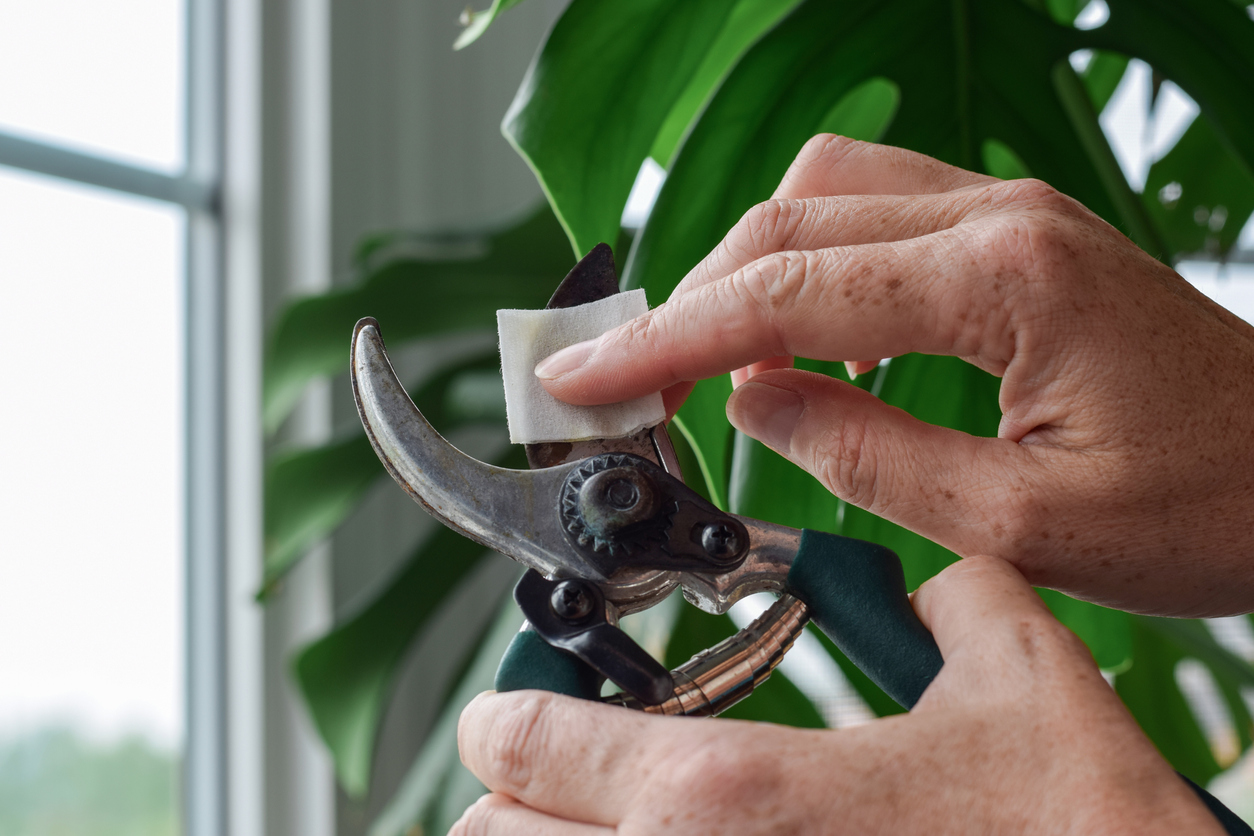
- Old wood: Types that bloom on old wood include the most popular bigleaf hydrangeas (Hydrangea macrophylla) as well as the oak-leaf (Hydrangea quercifolia), rough-leaf (Hydrangea aspera), and climbing (Hydrangea petiolaris) hydrangea varieties.
- New wood: Snowball shrubs that flower on new wood include panicle hydrangeas (Hydrangea paniculata) and smooth hydrangeas (Hydrangea arborescens).
- Reblooming: Repeat-blooming cultivars such as the Endless Summer series bloom on both old and new wood and should be treated like old wood types for the most continuous display of flowers.
Tools & Materials
Bobvila.com may earn a commission from purchases made through these links.
RELATED: 20 Outdoor Plants You Can Propagate From Cuttings
How to Prune Hydrangeas That Bloom on Old Wood
If you are debating when to trim hydrangeas that bloom on old wood, such as the bigleaf and oak-leaf types, do so just after they have finished flowering. If they bloom in June in your climate, for example, prune them in early July. Don’t delay trimming hydrangeas until August or you might cut off new buds that have already begun to form for the following year.
STEP 1: Deadhead any withered flowers that remain on the hydrangea bush.
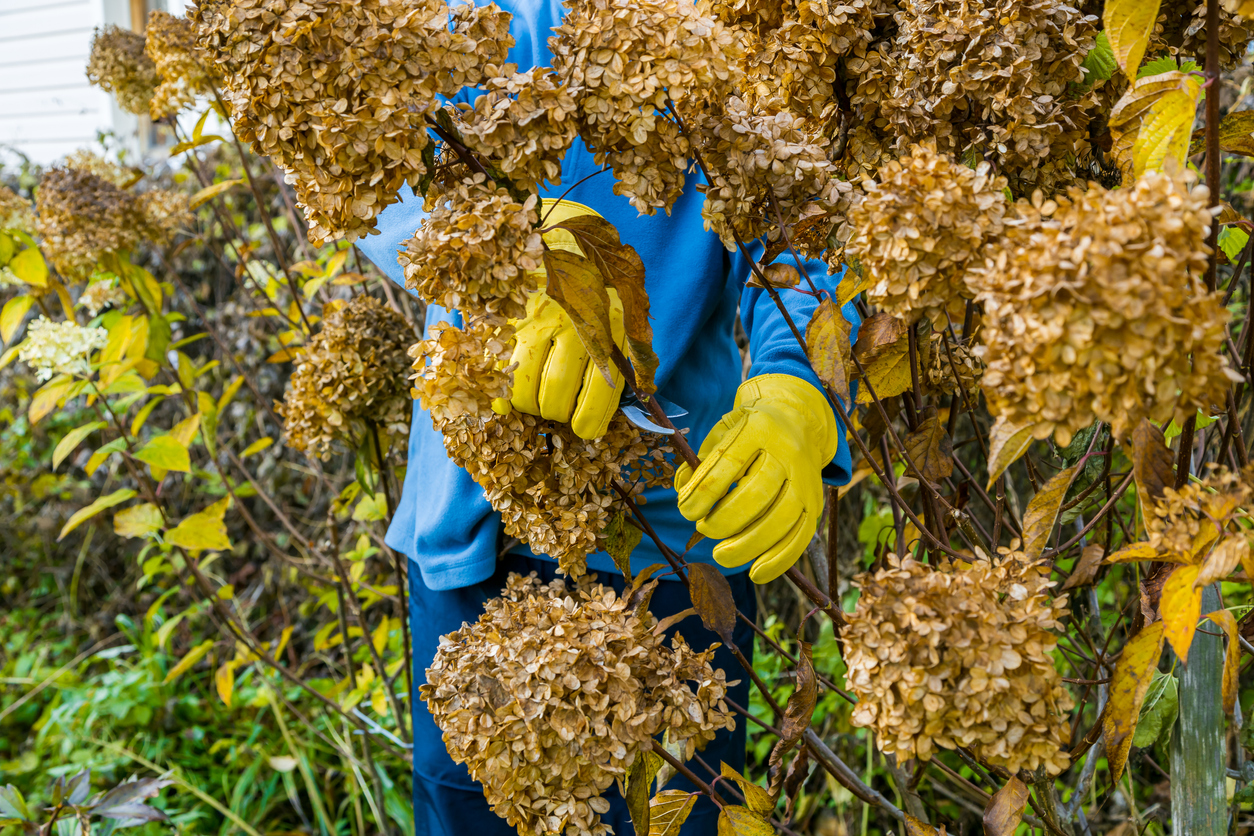
Deadheading hydrangeas simply means removing the faded flowerheads by snipping them off. Do that by using bypass pruning shears to cut each stem below the flowerhead and just above the closest pair of leaves beneath it. For lacecap types, cut above the second pair of leaves to help prevent the formation of seeds.
If you like the look of the aging flowerheads, you can leave them on the plant, especially for the oakleaf species, on which the blooms gradually darken to pink and then a purplish hue before they dry up altogether.
STEP 2: Remove branches that appear dead, decrepit, or inclined to rub.
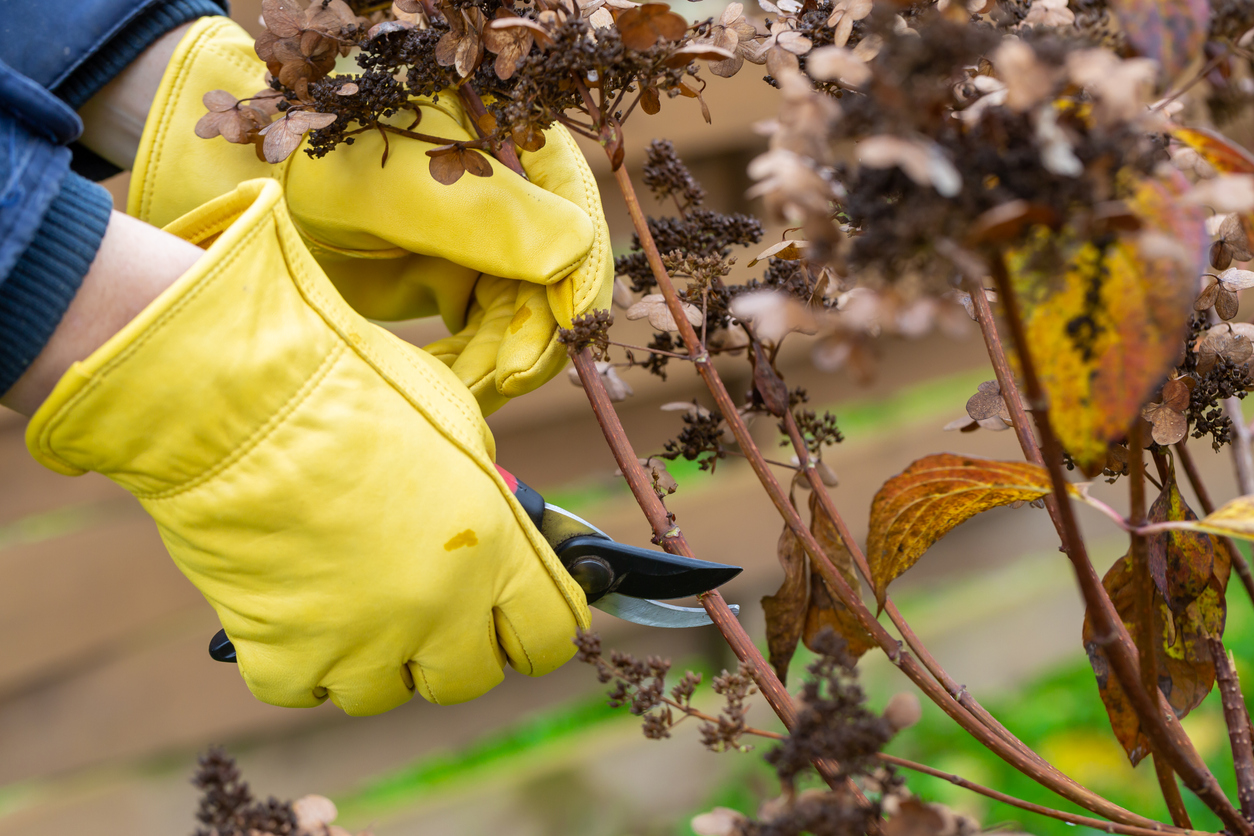
Snip off branches that have turned brittle and show no foliage nor any green pith when you scrape them. Cut them back to the point at which you do see green pith inside them or—for branches that show no green at all—remove them altogether.
Where two branches rub against each other, cut off the weakest (smallest) one to keep it from damaging the other; for these green branches, use bypass loppers if you can. Finally, remove about one-third of the oldest stems from the plant.
STEP 3: Cut the hydrangea shrub back to the size you prefer.
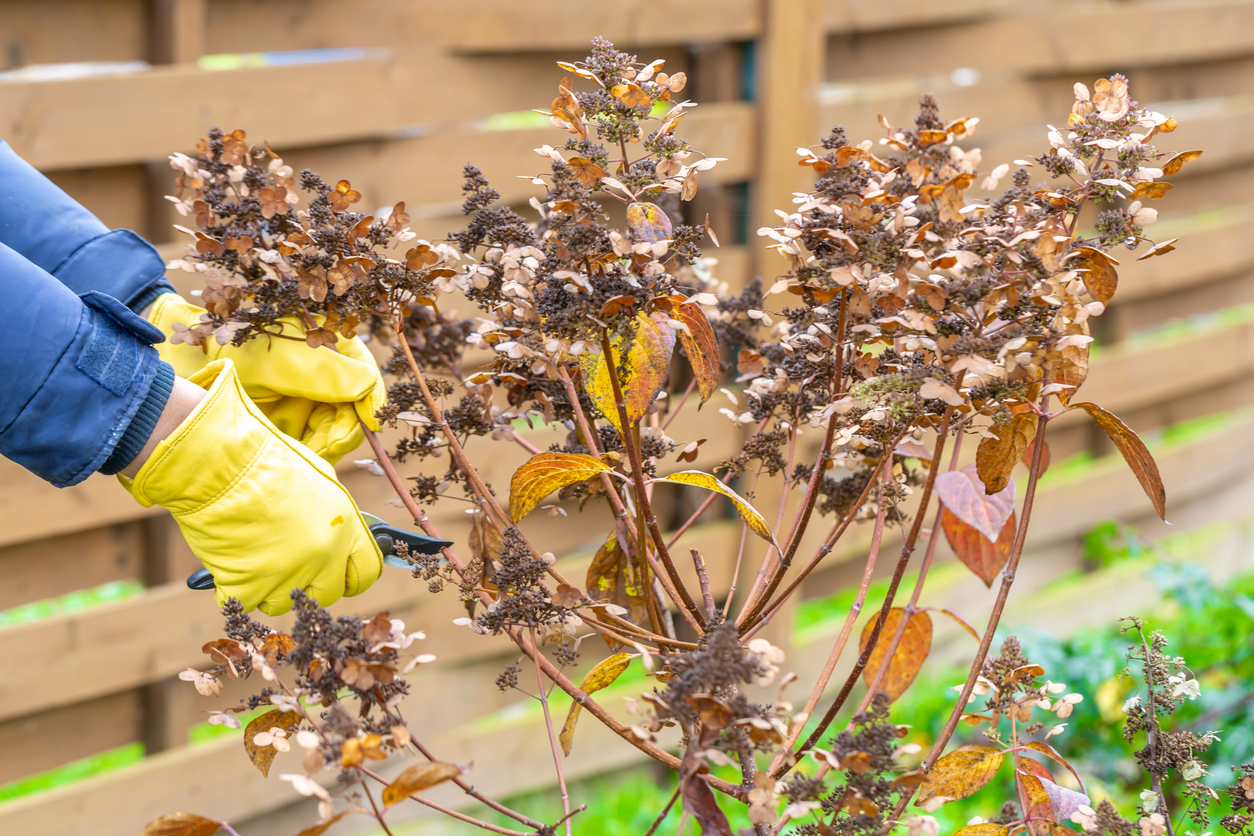
If your shrub has grown too large for its location, cut it back to the size you want it to be, making each cut about ¼ inch above a pair of leaves. However, this isn’t likely to subdue it for long. As University of California Master Gardener Norm Phillips notes “Usually the plant will return immediately to its former size. This is why it’s best to plant hydrangeas where they have enough space to grow.”
Climbing Hydrangeas: Treat vining hydrangeas much as you would other old-wood bloomers.
Climbing hydrangea blooms on old wood, namely side shoots from the previous year. However, it generally doesn’t require any pruning other than the removal of dead branches and of vines that have strayed further afield than you want them to.
Dead wood can be snipped off at any time but wait until after this climber blooms in late spring or early summer to cut back living vines. The Royal Horticultural Society notes that “most flowers appear towards the top of the plant, so try to leave as much of this unpruned as possible.”
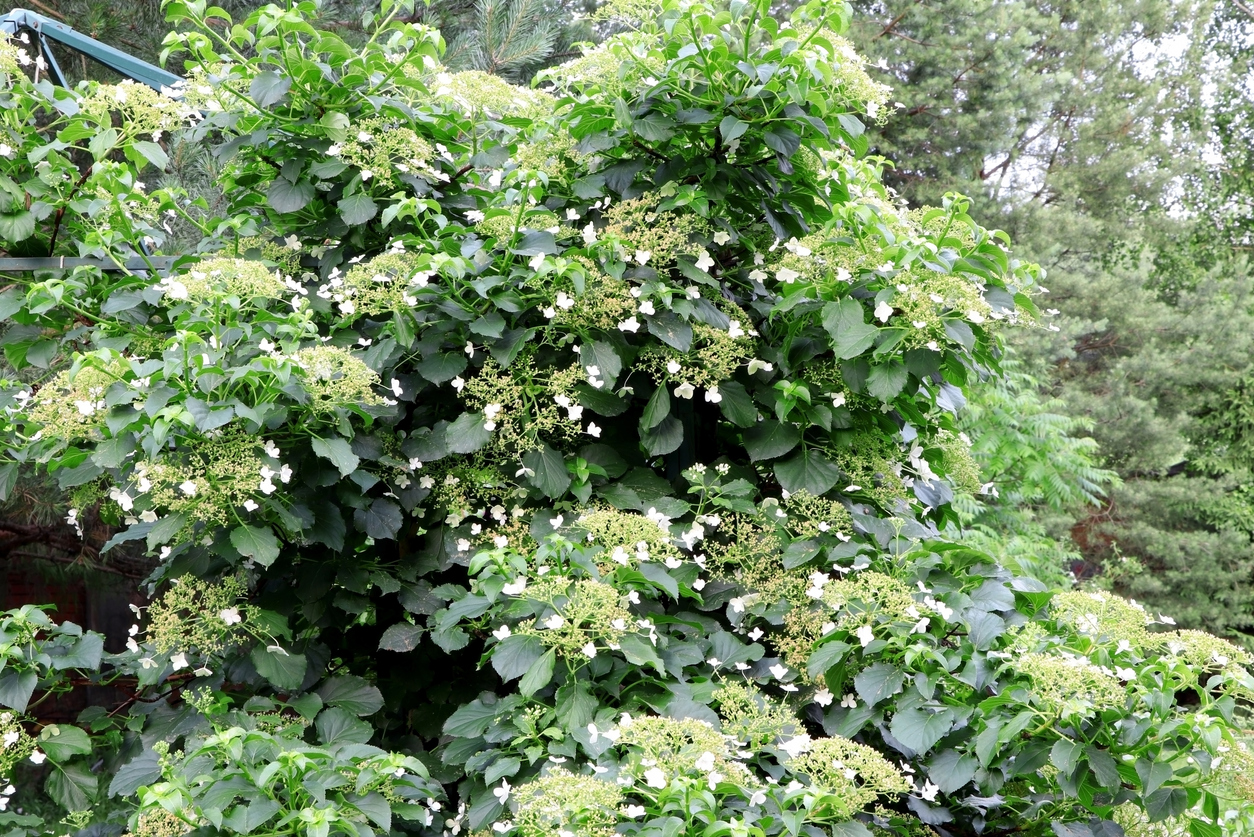
RELATED: The 14 Best Shrubs for the Front of the House
How to Prune Hydrangeas That Bloom on New Wood
Are you wondering when to cut back hydrangeas that bloom on new wood such as smooth and panicle types? Choose early spring after they have begun to show new leaf buds, so you can determine which branches are still alive. Cut them back moderately if you prefer large bushes with an abundance of small flower heads. If you prefer small bushes with large but less numerous flower heads, opt for more drastic pruning.
STEP 1: Cut the shoots back by a third to a half.
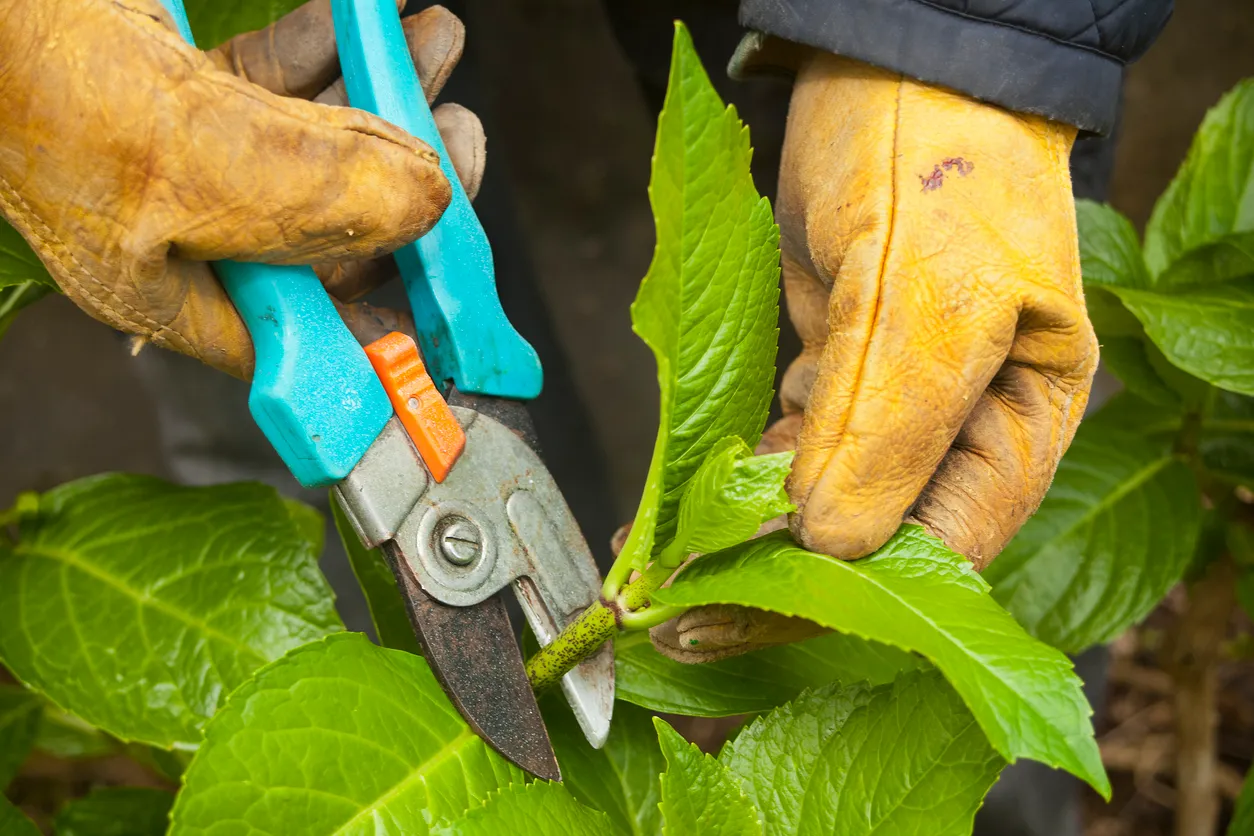
For the first option, remove one third to one half of each shoot, cutting ¼ inch above a pair of leaf buds each time. The exception, of course, would be dead or partially dead shoots, which should be cut all the way back or back to where leaf buds are showing. Always use bypass pruners when you can, since anvil types sometimes crush what they are supposed to be cutting, thus possibly doing more harm than good.
STEP 2: Alternatively, cut the bush back to 1 foot high.
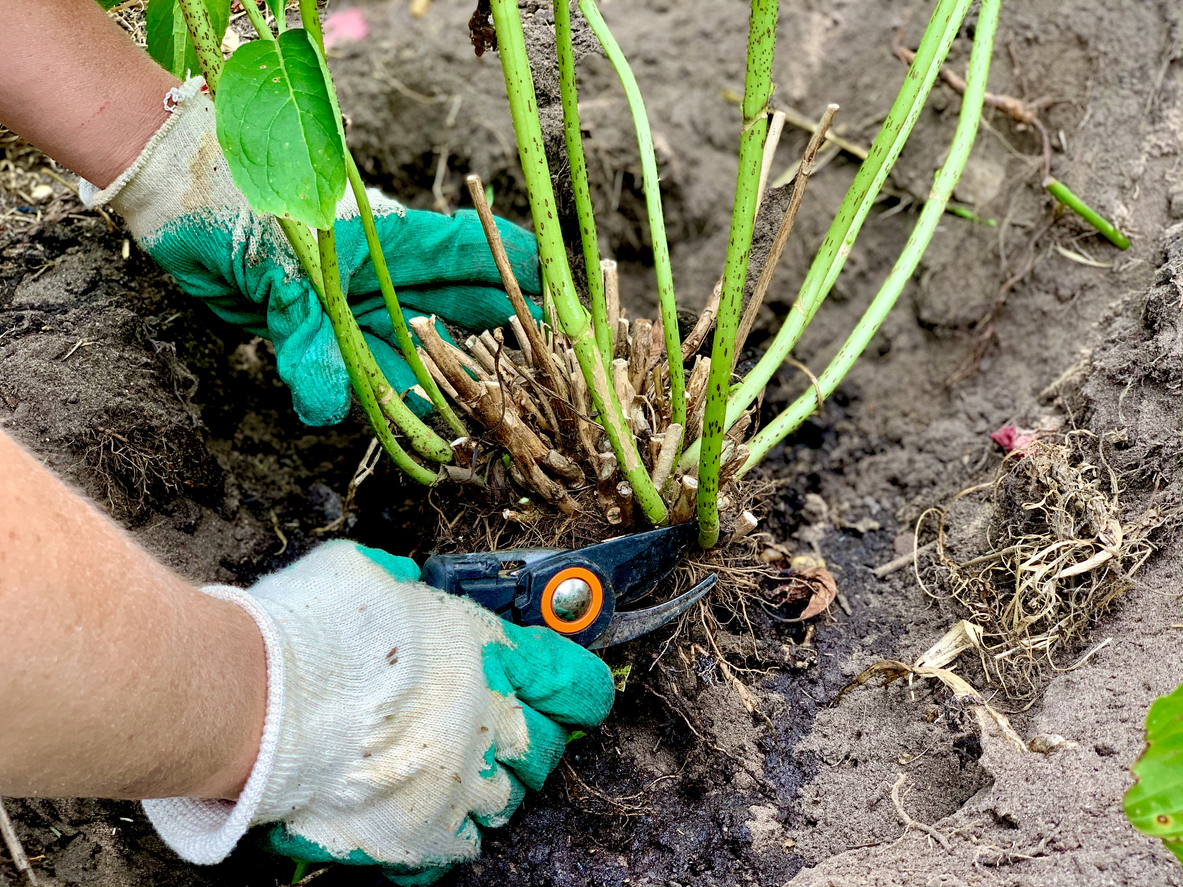
For the second option, which generally only applies to smooth (arborescens) types that have been allowed to become established for a couple years, cut the entire bush back hard. Sever each shoot 1 foot above the ground, snipping just above leaf buds as was previously mentioned.
Don’t repeat this more drastic type of pruning too often, since it can eventually weaken the shrub. Also, the large flower heads produced by it might require staking to help them keep their heads up high.
STEP 3: Remove weak shoots, leaving in place only the largest ones.
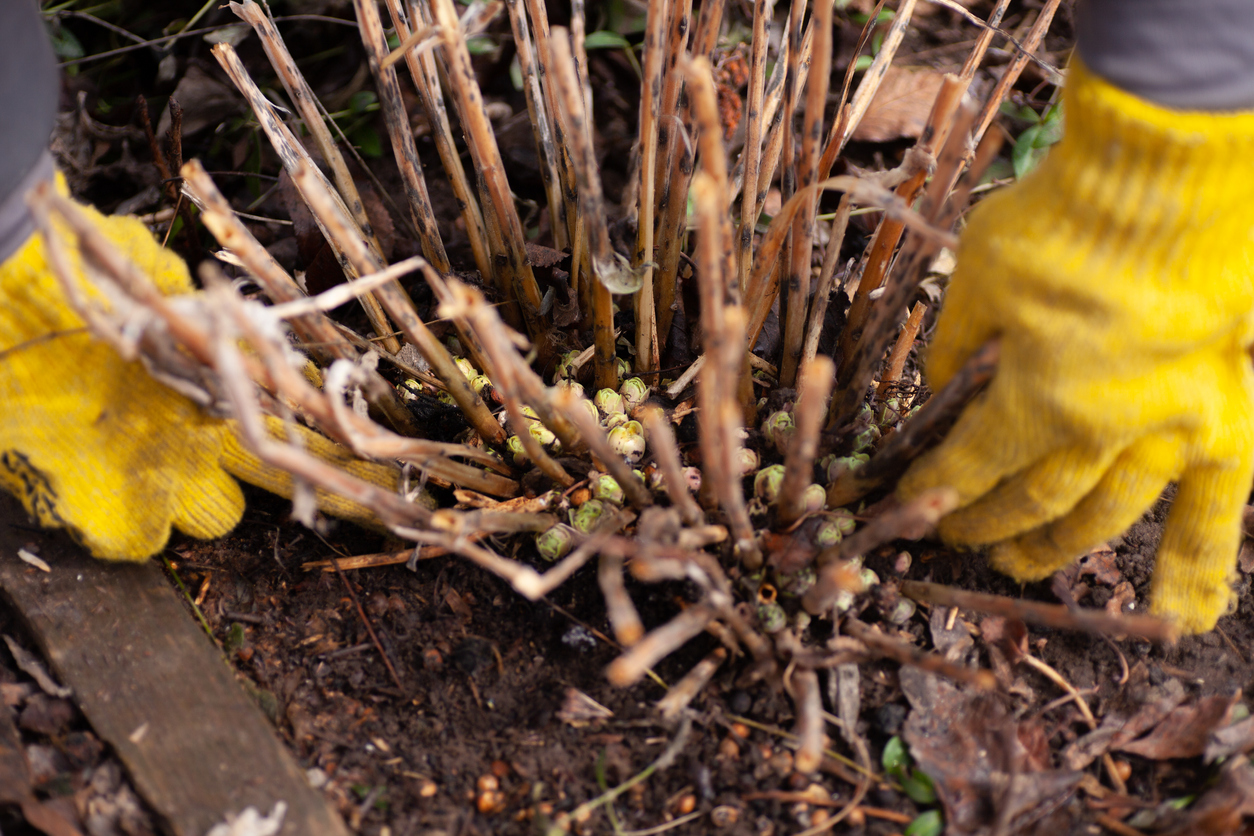
Whichever alternative you choose, once you have finished with the initial cutting back, examine the remaining shoots. If any of them are rubbing against each other, remove the smaller and weaker ones. In fact, it is a good idea to remove any shoots that obviously are inferior to the others, allowing the remaining strongest ones to become even stronger. Long-handled loppers, instead of pruning shears, will help you reach into the center of a bush, but are only necessary for cutting any branch over ¾ inch in diameter.
Final Thoughts
If you follow the hints above, you should be able to prune your hydrangeas without sacrificing flower buds. However, if you have difficulty understanding the concept of old wood vs. new wood, you might want to play it safe and avoid trimming those bushes at all.
After all, if they have plenty of space, it isn’t really necessary for you to chop away at them. As the University of Maryland Extension puts it, “a safe rule for all types of hydrangeas is that no pruning is better than the wrong type of pruning.”
